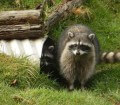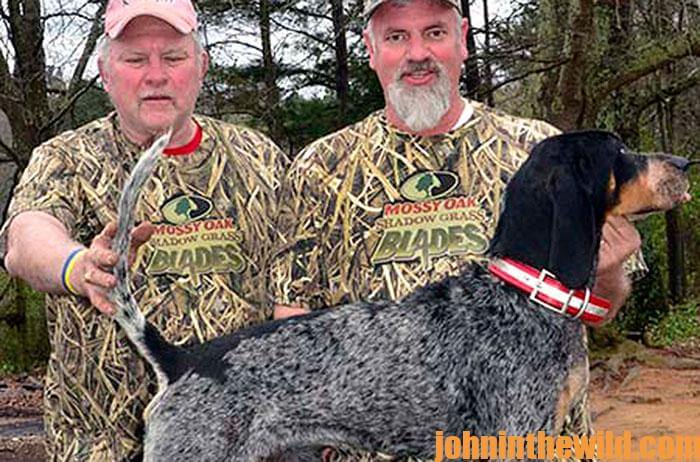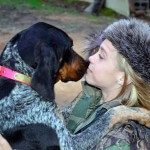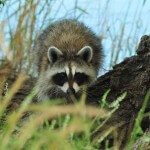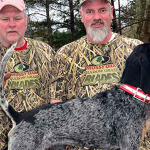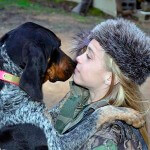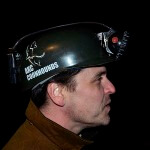John’s Note: During the still summer nights high on top of a hill, men will sit and listen to that pure sweet country music made by hounds with bawl and chop mouths. There’s a huge army of coon hunters that most of the hunting world never sees. Many of them hunt all year long and practice catch-and-release.
They’re tough. They cross creeks, swim rivers, crawl through briars and get hit in the face by limbs they never see. When our country was more rural and made up of many small farms, owning one or more coon hounds to protect your crops and produce an income was a necessity. In parts of the U.S., this is the same reason that farmers own, raise and hunt coon dogs today. But today, coon hunting and raising, training and selling coon dogs also has become a productive part-time job for hunters like Dexter Whatley of Kildare Junction in Cass County, Texas.
In many states, you can run coons with dogs all year long, but you only can harvest coons during coon season. To learn more about when men and women hunted coons, raised coon dogs, swapped and sold coon hounds we talked with Whatley, who’s been raising, training, showing and competing with coon dogs for 50 years.
“I’m often asked, ‘What do you think it costs to produce a Grand Nite Champion coon dog?’
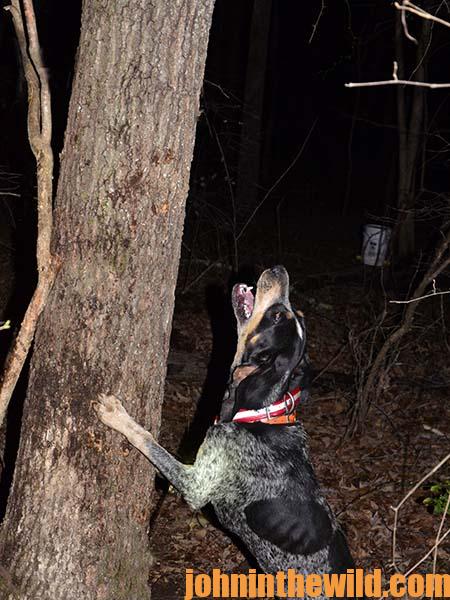 Whatley reports, “The answer to that question is why I pay so much attention to breeding and producing or buying a portion of a dog that can become a Grand Nite Champion or that already has his Grand Nite Championship. After you buy the pup you believe in, you have to feed him. Then if you turn him over to a trainer/handler like Keith Tate (1-205-527-1862) from Dora, Alabama, those trainers/handlers will charge from $200 – $400 per month to train that dog for you and carry him to sanctioned hunts where he can compete and have a chance to win his Grand Nite Championship.
Whatley reports, “The answer to that question is why I pay so much attention to breeding and producing or buying a portion of a dog that can become a Grand Nite Champion or that already has his Grand Nite Championship. After you buy the pup you believe in, you have to feed him. Then if you turn him over to a trainer/handler like Keith Tate (1-205-527-1862) from Dora, Alabama, those trainers/handlers will charge from $200 – $400 per month to train that dog for you and carry him to sanctioned hunts where he can compete and have a chance to win his Grand Nite Championship.
“the real money to be made with a coon dog is to find out if that dog can reproduce Grand Nite Champion pups.” ~ Dexter Whatley
Of course, you have to pay all the expenses and entry fees for the handler to take the dog to certified night hunts and hunt the dog in that hunt for you. You can run up big expenses, if you don’t have the right dog for competitions. But if you have the right dog that has the capability to win these hunts, that dog should make his Grand Nite Championship for about $5,000.
Once the dog has his Grand Nite Championship, you can sell him for more than what you’ve spent to get him to the Grand Nite Championship. However, for me, the real money to be made with a coon dog is to find out if that dog can reproduce Grand Nite Champion pups, since stud fees and selling pups is where a coon hunter makes money.
“If someone wants to buy a coon dog pup for about $500 – $800 and train the dog himself but has little or no knowledge of how to train that pup, I strongly recommend three books they need to buy – ‘Walk With Wick, Volume 1’ and ‘Walk With Wick, Volume 2’ by John Wick and ‘Gun Dog: Revolutionary Rapid Training Method’ by Richard A. Wolters. These books will give you insight on how to train a coon dog.
“Next, you want to make learning to find and tree coons easy for your pup. You need to locate a place that has coons and need to know where the coons on the property you hunt are located, so the dog can find them. We do this by putting out feeders for coons. You’ll have to spend about $100 per month to feed the coons. Then you can take a dog to or near a feeder where he should be able to find a fresh coon track to run.
You’ll spend about $40 per month feeding your coon hound and probably $300 per year for vet bills and shots. To train your own coon hound, you’ll spend at least $2,000 per year on the dog and the coons in the first 2 years of your coon hound’s life – not including the number of hours that you have to spend to train your coon hound yourself.
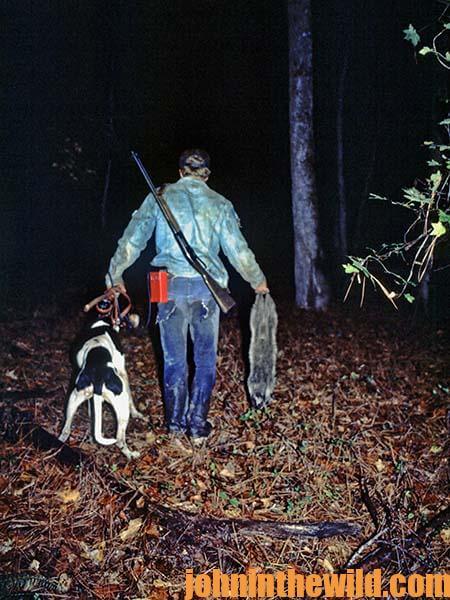 “When I was young and strong, we used to say, ‘If you’re going to train a good coon dog to be a great coon dog, you have to hunt the hair off him.’ When the dog doesn’t have any hair on his belly, that’s a sign you’ve been hunting him hard. However, as I’ve gotten older and maybe a little smarter, I’ve found it’s more important to rest a coon dog than to try and hunt that dog every night.
“When I was young and strong, we used to say, ‘If you’re going to train a good coon dog to be a great coon dog, you have to hunt the hair off him.’ When the dog doesn’t have any hair on his belly, that’s a sign you’ve been hunting him hard. However, as I’ve gotten older and maybe a little smarter, I’ve found it’s more important to rest a coon dog than to try and hunt that dog every night.
After years of experience, I’ve found that we can train a dog better by hunting him 2 or 3 nights per week, when the solunar tables tell us that animals are most likely to move, than if we try to hunt the dog 5 or 6 nights per week and then have 2 or 3 nights out of the 6 that we have poor hunts and don’t find many coons. This is one of the reasons we use the feeders to keep populations of coons in certain areas, so a young pup can have a successful night of finding and treeing coons when we take the pups out to start them hunting.
“For a dog to reach the title of Grand Nite Champion, first of all, he has to earn his Nite Championship. The United Kennel Club (UKC) says that a Nite champion has to be entered in sanctioned UKC competition hunts. Now thanks to the Internet, you can go to the United Kennel Club webpage www.ukcdogs.com, click on upcoming events and see the list of all the hunts being held that month in every state. To be a Nite champion, you have to win 100 championship points. Your dog has to have at least one first-place win that produces 40 points. Second place is given 35 points and third place 30 points, with tenth place awarded five points.
“When you register your dog with UKC, you’ll get an official rule book. In the rule book, you can see what rules govern the hunt and what the judges hope to see. If you subscribe to COONHOUND BLOODLINES© magazine (http://http://www.ukcdogs.com), you can get the rule book for free. You can go online at the UKC website and read or print a list of the official rule book. To be a Grand Nite Champion, your dog has to produce five wins in the Nite Champion division of competition hunts. Most of these hunts often will have less than 20 dogs entered.
“For me and most of the coon hunters I know, the main reason to go to competition hunts is for the fun and fellowship that we have seeing each other and hunting with each other at these events. I don’t advise anyone to get into coon hunting or trying to raise top-notch coon dogs, if they don’t enjoy the fun and fellowship that’s involved in being with other hunters of like mind who all like to hear that sweet mountain music that a coon dog running a hot track produces.”
To learn more about all outdoor subjects, get John E. Phillips’ Kindle eBooks and print books on fishing for bass, crappie, catfish and all saltwater offshore and inshore fish and hunting for dangerous game, deer, elk and turkeys, visit John’s Books page.
Share this page with a friend!
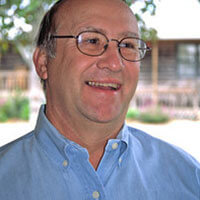 About the Author
About the Author
John Phillips, winner of the 2012 Homer Circle Fishing Award for outstanding fishing writer by the American Sportfishing Association (ASA) and the Professional Outdoor Media Association (POMA), the 2008 Crossbow Communicator of the year and the 2007 Legendary Communicator chosen for induction into the National Fresh Water Hall of Fame, is a freelance writer (over 6,000 magazine articles for about 100 magazines and several thousand newspaper columns published), magazine editor, photographer for print media as well as industry catalogues (over 25,000 photos published), lecturer, outdoor consultant, marketing consultant, book author and daily internet content provider with an overview of the outdoors. Click here for more information and a list of all the books available from John E. Phillips.


